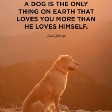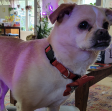From Pet Owners to Pet Parents
Attitudes to pet ownership are changing, here are 3 key trends we are seeing emerge in the Pet Care space.
For a while now, we’ve become more proactive in our approach towards personal health and wellbeing — and the pandemic brought this into sharper focus. The global health and wellness market is growing as more of us are taking active steps to improve our minds and body. This is crossing over into the world of pet care — and it works both ways. Pets can play a really positive role in human health and wellbeing and it has led pet owners to pull out all the stops for their furry friends.
Standards of pet products and services are at an all time high — with pet owners expecting the same high standards as the products and services they use. We’re seeing the emergence of pet parents (rather than owners) with pets becoming equal family members. This change in behaviour is determining the future of pet care and changing the goal posts on pet health, care and nutrition.
We’ve been working with a famous pet food manufacturer to look closely at these trends and create a vision for its healthcare products -with the future health care needs of pets at its core. Based on our research and learning from the brilliant businesses we work with, we see three key trends:
Trend 1: Obesity
Pet obesity is a huge challenge, and can lead to a range of other health issues, from joint pain to gastrointestinal (GI) problems. It’s believed that nearly half of pets are overweight or obese globally. Consumers are looking for convenient and fun solutions to keep their pets fit and healthy and are comfortable using technology to do so. This presents a huge opportunity for the pet industry to create innovative products and services.
There are already some in the market — we’re seeing wearable technology that monitors pet activity on the rise. Pet parents can now get insights into exactly how walks are contributing to the health of their pets through UK based PitPat. Their robust Activity Monitor for dogs tracks metrics such as: activity time, rest time, calories burned, distance and weight, to give pet parents the information they need to ensure their pet is fit and healthy.
We’re also seeing manufacturers recognising the growing problem, with partnerships like Royal Canin and the PDSA popping up to address the obesity crisis in pets (which remains one of PDSA’s top five pet welfare issues). Through the partnership, Royal Canin will help PDSA raise awareness of pet obesity through education and by offering Royal Canin’s science-based dog and cat food formulas at PDSA’s pet hospitals across the UK.
There’s two key observations for us: there seems to be more products for dogs than any other pets in this space. Obesity in pets is showing no signs of slowing down leaving potential space in the market for other products and services to keep our pets fit and healthy.
Trend 2: Wellbeing
Another area consumers are investing in is pet focused wellbeing solutions. These are the trends we’re seeing in the wellbeing space:
- Separation anxiety with the return to work has led to an increased demand for anxiety-reducing pet supplements
- Pets are becoming more pampered than ever, with brands launching new wellbeing products that were previously used only for their human counterparts
- Wellbeing is going on-demand, with more vets offering 24/7 online service and prescription delivery
- PetTech is the new playground for wellbeing, allowing pet parents to understand more about their pets’ health status instantly.
It’s extending into the pet insurance market. Lassie offers specialised insurance that helps pet parents improve the wellbeing of their pets, mimicking the Vitality model of life insurance. They offer online courses and content which improves pet health. Part of the pull is a lower insurance premium if the courses are viewed (up to 25%).
Trend 3: Sustainability
Consumers are demanding more from their purchases when it comes to sustainability, and pet care is no different. Meat in kibble is responsible for 25–30% of the environmental impact of meat consumption in the US alone and we’re seeing similar in the UK. Eco-friendly pet food is on the rise as dog and cat owners become more aware of the impact of their beloved pet’s diet.
Brands are looking at how to become more sustainable — and we’re seeing emergence of:
- Refill stations in supermarkets, allowing customers to use their own containers and cut down on packaging waste
- Home delivery services, cutting emissions and packaging waste
- More 100% recyclable packaging across product ranges
- Adopting alternative ingredients that provide health benefits for pets, whilst reducing the environmental impact of producing pet food.
Wild Earth uses plant-based ingredients that produce high-quality protein, which are easy to grow at scale whilst requiring far less resources to produce. And it’s not just the planet that benefits, in a survey of 3,000 of their customers 86% reported health improvements in their pets after switching to Wild Earth products.
We’ve worked with famous global FMCG’s in the pet care industry. If you’d like to find out more about our work, contact Natalia Waters or drop us a line.
Authors: Jon Arnett, Trainee Consultant and Gemma Slater, Senior Comms and Marketing Manager at Magnetic.






